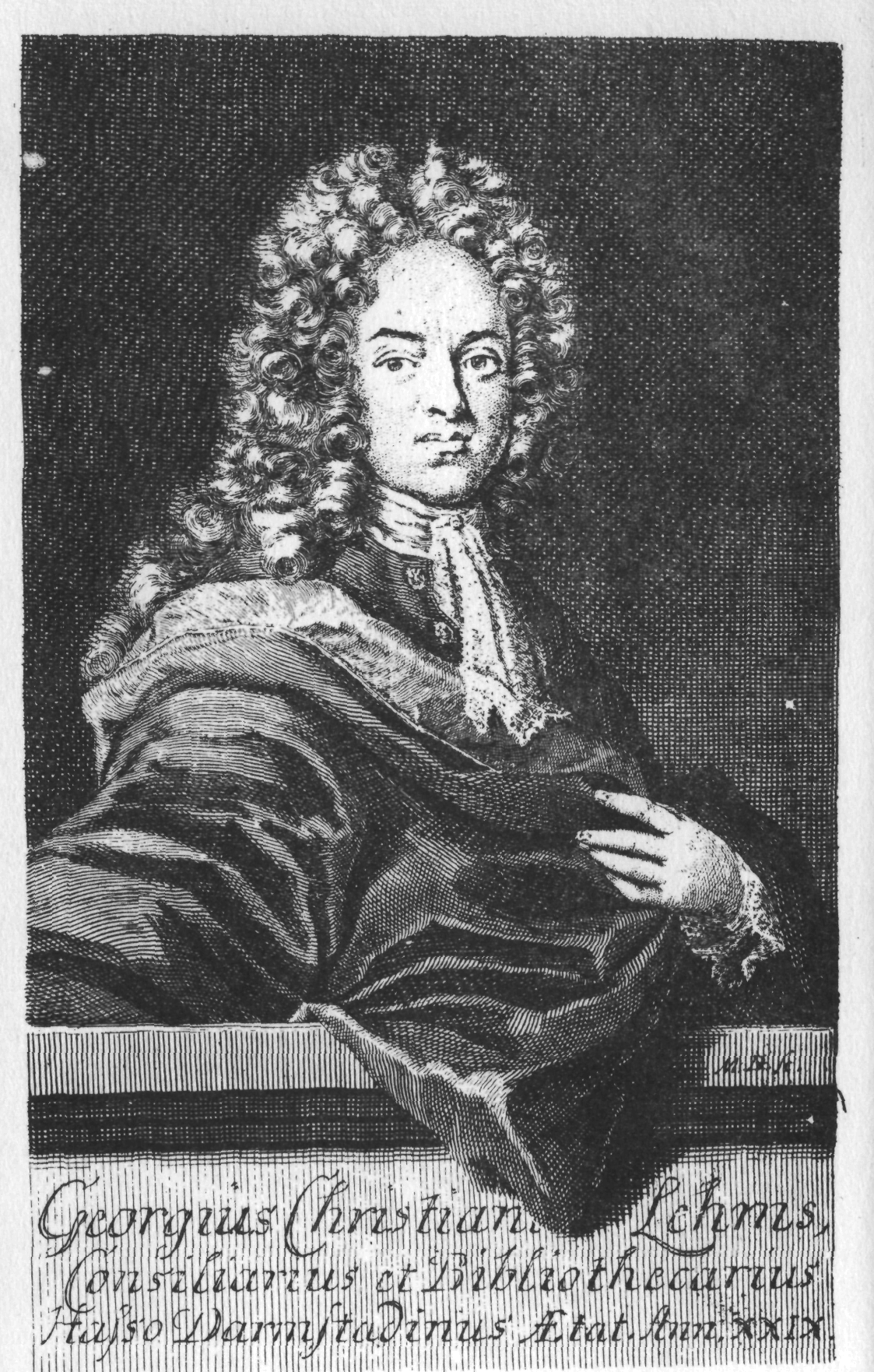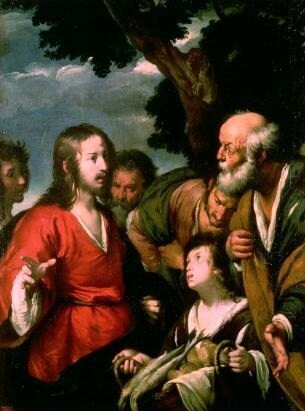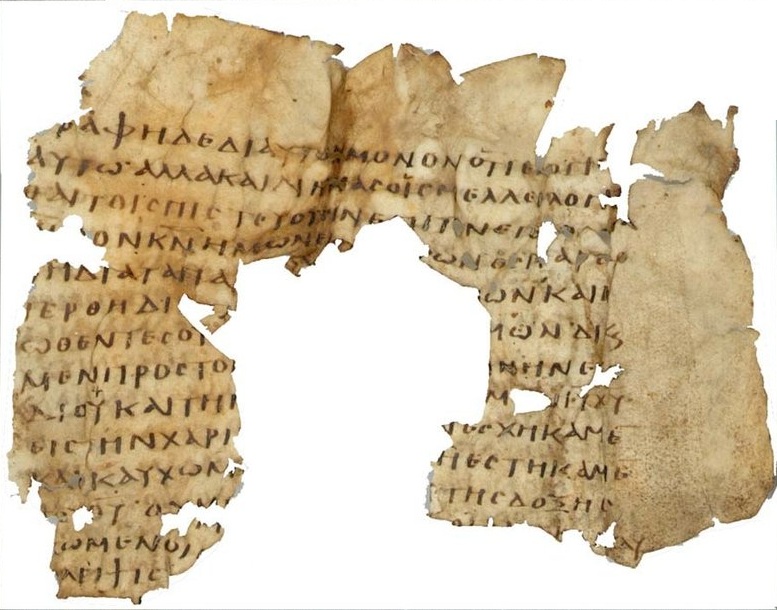|
Widerstehe Doch Der Sünde, BWV 54
(Just resist sin), BWV 54, is a church cantata by Johann Sebastian Bach. He composed the solo cantata for alto in Weimar between 1711 and 1714, and probably performed it on the seventh Sunday after Trinity, 15 July 1714. It is Bach's first extant church cantata for a solo voice. The text of the short work was written by Georg Christian Lehms, for two arias and a connecting recitative. The topic is to resist sin, based on the Epistle of James. The text was published in a 1711 collection, dedicated to the Sunday Oculi. It is not known when Bach composed the work but is assumed that he performed it as part of his monthly cantata productions in 1714 on the seventh Sunday after Trinity, 15 July. The solo voice is accompanied by strings: two violin parts, two viola parts and continuo. The composition begins with a striking dissonant chord. History and words The history of the composition is not clear. The text was written by Georg Christian Lehms for Oculi, the third Sunda ... [...More Info...] [...Related Items...] OR: [Wikipedia] [Google] [Baidu] |
Church Cantata (Bach)
Throughout his life as a musician, Johann Sebastian Bach composed cantatas for both secular and sacred use. His church cantatas are cantatas which he composed for use in the Lutheran church, mainly intended for the occasions of the liturgical year. Bach's ''Nekrolog'' mentions five cantata cycles: "Fünf Jahrgänge von Kirchenstücken, auf alle Sonn- und Festtage" (Five year-cycles of pieces for the church, for all Sundays and feast days), which would amount to at least 275 cantatas,Alfred Dörffel. Bach-Gesellschaft Ausgabe Volume 27: '' Thematisches Verzeichniss der Kirchencantaten No. 1–120''. Breitkopf & Härtel, 1878. Introduction, p. VI or over 320 if all cycles would have been ideal cycles.Günther Zedler''Die Kantaten von Johann Sebastian Bach: Eine Einführung in die Werkgattung''.Books on Demand, 2011. p. 24–25/ref> The extant cantatas are around two-thirds of that number, with limited additional information on the ones that went missing or survived as fra ... [...More Info...] [...Related Items...] OR: [Wikipedia] [Google] [Baidu] |
Lent
Lent ( la, Quadragesima, 'Fortieth') is a solemn religious observance in the liturgical calendar commemorating the 40 days Jesus spent fasting in the desert and enduring temptation by Satan, according to the Gospels of Matthew, Mark and Luke, before beginning his public ministry. Lent is observed in the Anglican, Eastern Orthodox, Lutheran, Methodist, Moravian, Oriental Orthodox, Persian, United Protestant and Roman Catholic traditions. Some Anabaptist, Baptist, Reformed (including certain Continental Reformed, Presbyterian and Congregationalist churches), and nondenominational Christian churches also observe Lent, although many churches in these traditions do not. Which days are enumerated as being part of Lent differs between denominations (see below), although in all of them Lent is described as lasting for a total duration of 40 days. In Lent-observing Western Churches, Lent begins on Ash Wednesday and ends approximately six weeks later; depending on the Christian ... [...More Info...] [...Related Items...] OR: [Wikipedia] [Google] [Baidu] |
Geist Und Seele Wird Verwirret, BWV 35
(Spirit and soul become confused), 35, is a church cantata by Johann Sebastian Bach. He composed the solo cantata for alto voice in Leipzig for the twelfth Sunday after Trinity and first performed it on 8 September 1726. Bach composed the cantata in his fourth year as ''Thomaskantor'' (musical director) in Leipzig. The text is based on the day's prescribed reading from the Gospel of Mark, the healing of a deaf mute man. The librettist is Georg Christian Lehms, whose poetry Bach had used already in Weimar as the basis for solo cantatas. The text quotes ideas from the gospel and derives from these the analogy that as the tongue of the deaf mute man was opened, the believer should be open to admire God's miraculous deeds. The cantatas for this Sunday have a positive character, which Bach stressed in earlier works for the occasion by including trumpets in the score. In this work, he uses instead an obbligato solo organ in several movements. The cantata is structured in seven m ... [...More Info...] [...Related Items...] OR: [Wikipedia] [Google] [Baidu] |
Alto (voice)
The musical term alto, meaning "high" in Italian (Latin: ''altus''), historically refers to the contrapuntal part higher than the tenor and its associated vocal range. In 4-part voice leading alto is the second-highest part, sung in choir, choruses by either low women's or high men's voices. In voice type, vocal classification these are usually called contralto and male alto or countertenor. Such confusion of "high" and "low" persists in instrumental terminology. Alto flute and alto trombone are respectively lower and higher than the standard instruments of the family (the standard instrument of the trombone family being the tenor trombone), though both play in ranges within the alto clef. Recorder (musical instrument)#Types of recorder, Alto recorder, however, is an octave higher, and is defined by its relationship to tenor and soprano recorders; alto clarinet is a fifth lower than B-flat clarinet, already an 'alto' instrument. There is even a Contrabass clarinet, contra-alto cl ... [...More Info...] [...Related Items...] OR: [Wikipedia] [Google] [Baidu] |
Soprano
A soprano () is a type of classical female singing voice and has the highest vocal range of all voice types. The soprano's vocal range (using scientific pitch notation) is from approximately middle C (C4) = 261 Hz to "high A" (A5) = 880 Hz in choral music, or to "soprano C" (C6, two octaves above middle C) = 1046 Hz or higher in operatic music. In four-part chorale style harmony, the soprano takes the highest part, which often encompasses the melody. The soprano voice type is generally divided into the coloratura, soubrette, lyric, spinto, and dramatic soprano. Etymology The word "soprano" comes from the Italian word '' sopra'' (above, over, on top of),"Soprano" '' |
Mein Herze Schwimmt Im Blut, BWV 199
Johann Sebastian Bach composed the church cantata (My heart swims in blood) 199 in Weimar between 1711 and 1714, and performed it on the eleventh Sunday after Trinity, 12 August 1714. It is a solo cantata for soprano. The text was written by Georg Christian Lehms and published in Darmstadt in 1711 in the collection , on the general topic of redemption. The librettist wrote a series of alternating recitatives and arias, and included as the sixth movement (of eight) the third stanza of Johann Heermann's hymn "". It is not known when Bach composed the work, but he performed it as part of his monthly cantata productions on the eleventh Sunday after Trinity, 12 August 1714. The solo voice is accompanied by a Baroque instrumental ensemble of oboe, strings and continuo. The singer expresses in a style similar to Baroque opera the dramatic development from feeling like a "monster in God's eyes" to being forgiven. Bach revised the work for later performances, leading to three different ... [...More Info...] [...Related Items...] OR: [Wikipedia] [Google] [Baidu] |
John Eliot Gardiner
Sir John Eliot Gardiner (born 20 April 1943) is an English conductor, particularly known for his performances of the works of Johann Sebastian Bach. Life and career Born in Fontmell Magna, Dorset, son of Rolf Gardiner and Marabel Hodgkin, Gardiner's early musical experience came largely through singing with his family and in a local church choir. As a child he grew up with the celebrated Haussmann portrait of J. S. Bach, which had been lent to his parents for safe keeping during the Second World War. A self-taught musician who also played the violin, he began to study conducting at the age of 15. He was educated at Bryanston School, then studied history at King's College, Cambridge, where his tutor was the social anthropologist Edmund Leach."John Eliot Gardiner", in ''Contemporary Musicians'' (1999), Detroit: Gale While an undergraduate at Cambridge he launched his career as a conductor with a performance of Vespro della Beata Vergine by Monteverdi, in King's College Chapel on ... [...More Info...] [...Related Items...] OR: [Wikipedia] [Google] [Baidu] |
Feeding The Multitude
In Christianity, the feeding the multitude is two separate miracles of Jesus reported in the Gospels. The first miracle, the "Feeding of the 5,000", is the only miracle—aside from the resurrection—recorded in all four gospels (Matthew 14:13–21; Mark 6:31–44; Luke 9:12–17; John 6:1–14). The second miracle, the "Feeding of the 4,000", with 7 loaves of bread and a few small fish, is reported by Matthew 15:32–39 and Mark 8:1–9, but not by Luke or John. The feeding of the 5,000 people The Feeding of the 5,000 is also known as the "miracle of the five loaves and two fish"; the Gospel of John reports that Jesus used five loaves and two fish supplied by a boy to feed a multitude. According to Matthew's gospel, when Jesus heard that John the Baptist had been killed, he withdrew by boat privately to a solitary place. Luke specifies that the place was near Bethsaida. The crowds followed Jesus on foot from the towns. When Jesus landed and saw a large crowd, he had compassion ... [...More Info...] [...Related Items...] OR: [Wikipedia] [Google] [Baidu] |
Gospel Of Mark
The Gospel of Mark), or simply Mark (which is also its most common form of abbreviation). is the second of the four canonical gospels and of the three synoptic Gospels. It tells of the ministry of Jesus from his baptism by John the Baptist to his death, burial, and the discovery of his empty tomb. There is no miraculous birth or doctrine of divine pre-existence, nor, in the original ending ( Mark 16:1–8), any post-resurrection appearances of Jesus. It portrays Jesus as a teacher, an exorcist, a healer, and a miracle worker. He refers to himself as the Son of Man. He is called the Son of God, but keeps his messianic nature secret; even his disciples fail to understand him. All this is in keeping with Christian interpretation of prophecy, which is believed to foretell the fate of the messiah as suffering servant. The gospel ends, in its original version, with the discovery of the empty tomb, a promise to meet again in Galilee, and an unheeded instruction to spread the good ne ... [...More Info...] [...Related Items...] OR: [Wikipedia] [Google] [Baidu] |
Epistle To The Romans
The Epistle to the Romans is the sixth book in the New Testament, and the longest of the thirteen Pauline epistles. Biblical scholars agree that it was composed by Paul the Apostle to explain that salvation is offered through the gospel of Jesus Christ. Romans was likely written while Paul was staying in the house of Gaius in Corinth. The epistle was probably transcribed by Paul's amanuensis Tertius and is dated AD late 55 to early 57. Consisting of 16 chapters, versions with only the first 14 or 15 chapters circulated early. Some of these recensions lacked all reference to the original audience of Christians in Rome making it very general in nature. Other textual variants include subscripts explicitly mentioning Corinth as the place of composition and name Phoebe, a deacon of the church in Cenchreae, as the messenger who took the epistle to Rome. Prior to composing the epistle, Paul had evangelized the areas surrounding the Aegean Sea and was eager to take the gospel fa ... [...More Info...] [...Related Items...] OR: [Wikipedia] [Google] [Baidu] |
Alfred Dürr
Alfred Dürr (3 March 1918 – 7 April 2011) was a German musicologist. He was a principal editor of the Neue Bach-Ausgabe, the second edition of the complete works of Johann Sebastian Bach. Professional career Dürr studied musicology and Classical philology at the Georg-August-Universität Göttingen from 1945 to 1950. He wrote his thesis about Bach's early Bach cantata, cantatas. From 1951 until his retirement in 1983 he was an employee of the Johann Sebastian Bach Institute in Göttingen, West Germany, from 1962 to 1981 its deputy director. His work involved collaboration with colleagues in East Germany. He was a principal editor of the Neue Bach-Ausgabe, a project which was divided between the Johann Sebastian Bach Institute and the Bach-Archiv Leipzig in East Germany. From 1953 to 1974 Dürr was editor of the ''Bach-Jahrbuch'' (Bach almanach), together with Werner Neumann, the founder and director of the Bach-Archiv Leipzig. Dürr received honorary doctorates of music fro ... [...More Info...] [...Related Items...] OR: [Wikipedia] [Google] [Baidu] |
Ernest Augustus I, Duke Of Saxe-Weimar-Eisenach
Ernest Augustus I, Duke of Saxe-Weimar (German: ''Ernst August I''; 19 April 1688 – 19 January 1748), was a duke of Saxe-Weimar and, from 1741, of Saxe-Weimar-Eisenach. Biography He was the second but eldest surviving son of Johann Ernst III, Duke of Saxe-Weimar and his first wife Sophie Auguste of Anhalt-Zerbst. When his father died in 1707, Ernst August became co-ruler (''Mitherr'') of Saxe-Weimar, along with his uncle Wilhelm Ernst, but his title was only nominal, since Wilhelm Ernst was the actual ruler of the duchy. Only when Wilhelm Ernst died in 1728 did Ernst August begin to exercise true authority over Saxe-Weimar. Excesses Ernst August was a splendor-loving ruler, and his extravagances contributed to the eventual financial ruin of his duchy. Desperately in need of funds, he resorted to the practice of arresting wealthy subjects without cause, and setting them free only after they had renounced their fortunes to the duke, or had paid exorbitant ransoms. Some of ... [...More Info...] [...Related Items...] OR: [Wikipedia] [Google] [Baidu] |







